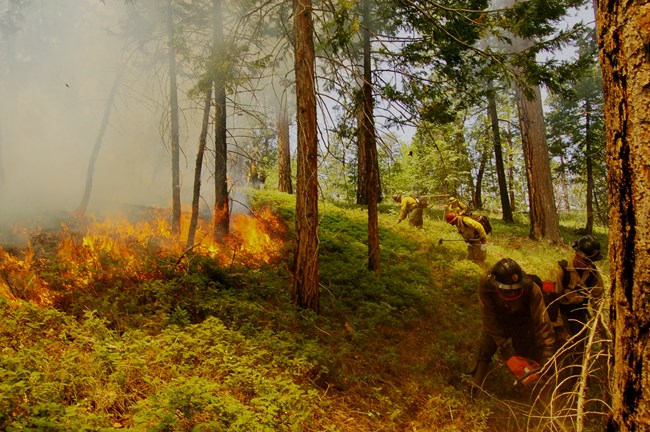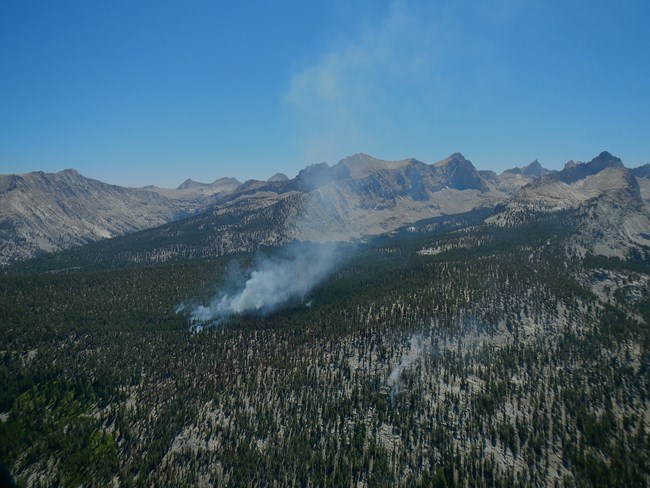
Additional fire terms can be found in the National Wildfire Coordinating Group Glossary

Wildfire
Wildfires can be started by many different causes. This includes lightning, lava, and even people. Most wildfires in the United States are caused by humans.
Every fire, every time, gets a thorough review once the fire is discovered. Multiple factors determine the response fire managers take on a wildfire once it is discovered.
Frequently fire managers take a variety of suppression actions. Some are considered direct - at the fireline, such as digging lines down to mineral soil for containment; while others are indirect, using natural barriers to confine or contain the fire, or firing off from a containment line to burn fuel/vegetation between the fire and the containment line. Actions taken by firefighters on a wildfire are based on what's outlined in a national park unit's fire management plan.

How Are We Responding?
Some wildfires are either threatening life and property or have the potential to threaten life and property. In these cases, the wildfire is agressively suppressed – meaning firefighters are actively working to contain and then control the fire – through a range of techniques removing one of the elements of the fire triangle such as removing fuels, using dirt to suffocate the fire, and / or cooling vegetation with targeted water.
There is no single answer. Safety, threats to life and property, and the benefit to the ecosystem are all taken into consideration. The right decision in wildland fire management considers the right response, at the right time, for the right reasons.
Incident response needs are based on Incident Command System Levels (Type 1-5) with Type 1 incidents being the most complex and Type 5 being the least.

No Single Answer
Naturally-caused wildfire has been part of ecosystems for millennia, and as such, these ecosystems have adapted to it. In some cases portions of wildfires may be monitored, while other portions may be suppressed or actively extinguished.
Where a fire is located, timing, conditions, and safety are just some of the factors in considering how a fire is managed. Active and appropriate wildland fire management is on a spectrum from full suppression to full monitoring.

Prescribed Fire
A prescribed fire is ignited by fire managers after careful planning, under a set of conditions that must be met prior to ignition, and is carefully monitored. Prescribed fires are carried out for very specific purposes or objectives and may be used to manage certain types of natural and cultural landscapes.
Objectives for prescribed fires can include reducing buildup of dead and downed trees around communities or other developed areas such as campgrounds, promoting growth of native plant species, improving habitat for animals, and removing harmful exotic, or nonnative plant species.
Each prescribed fire has a written out plan, known as a prescription that indicates the acceptable fuel and weather conditions under which a fire should be set so that it can be managed safely and meet the objectives of the prescribed fire plan. The fire’s prescription is outlined in a fire's burn plan, which is carried out by a team, led by a burn boss.
View a real-life example of the Objectives from the Incident Action Plan for the Goliath Prescribed Burn in Kings Canyon National Park.
Last updated: August 5, 2025
